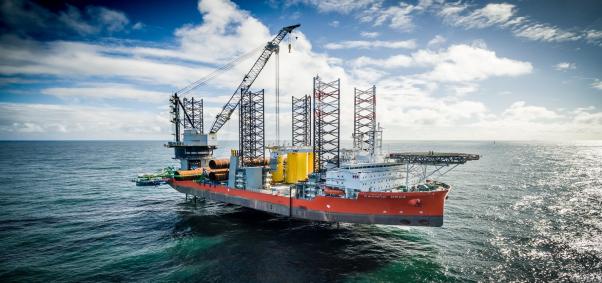
This article was published in USA Today on July 6, 2015.
Nicholas Stern is co-chair of the Global Commission on the Economy and Climate and IG Patel professor of economics and government at the London School of Economics and Political Science. Felipe Calderón is the former President of Mexico and the chair of the Global Commission on the Economy and Climate.
Taking strong climate action is a multitrillion dollar opportunity for better economic growth.
Recent trends in the global economy — such as the falling cost of clean energy, the spread of carbon pricing and the continuing volatility of oil prices — are building momentum for low-carbon growth and development.
To meet the goals of raising living standards, tackling poverty and reducing climate risk together, the scale and speed of change must accelerate, spurred on by cooperation both internationally and between the public and private sectors. With the help of international partnerships, it is possible through 10 key areas of action to generate better economic growth while achieving nearly all of the emissions reductions needed in the next 15 years to avoid dangerous climate change.
These partnerships go beyond just national governments to include cities and companies. They can stimulate growth by expanding markets, reducing costs, spreading best practices and alleviating concerns about international competitiveness.
We can start by accelerating low-carbon development already underway in the world's cities. Almost 80 cities have already committed to reducing emissions through low-carbon development strategies and tracking their progress through the Compact of Mayors. Key measures such as investing in mass transit and making new buildings energy-efficient could cut emissions strongly while generating $17 trillion in savings by 2050. As an added bonus, making cities more compact, connected and coordinated can also improve quality of life by lowering pollution, congestion and traffic fatalities.
Governments can also lead by pricing carbon emissions. Forty countries and 20 sub-national governments have adopted or are planning carbon pricing, and 28 countries are undertaking energy subsidy reform.
Taking these measures reduces emissions and improves economic efficiency, while increasing the amount of government funds available for other priorities such as health, education and innovation.
Of course, governments cannot do it alone. The private sector must be committed as well — indeed, it is businesses that will likely provide most of the investment. Encouragingly, many businesses are already embracing the low-carbon economy, recognizing that it is better for growth and profitability than the high-carbon alternative. For instance, a group of more than half of the Fortune 100 companies have indicated that they are together saving $1.1 billion annually from emissions reduction initiatives. Major corporations responsible for more than 90% of the palm oil trade have committed to eliminate deforestation from their supply chains. And over 1,000 major companies and investors have explicitly signaled their support for carbon pricing.
Public-private partnerships and industry networks such as the Tropical Forest Alliance 2020 and Consumer Goods Forum are driving innovation and transforming markets in key sectors and value chains. It's no wonder the CDP Climate Performance Leadership index of companies taking the strongest climate action has outperformed the Bloomberg World Index of top companies by more than 9% since 2011.
In the finance sector, a number of signs point to a low-carbon transformation. Annual investment in clean energy now exceeds fossil fuel investments, and the issuance of "green bonds" for sustainable infrastructure has tripled in the past year to $37 billion. The Group of 20 nations and a number of major countries — including Britain, China and France — are looking at the financial risks associated with a high-carbon economy and how to increase transparency around such investments.
Last year, for the first time in decades, the world economy grew while emissions from energy use stayed flat. While this is a positive sign that growth and emissions are beginning to be decoupled, this process should be accelerated. Climate risk is still increasing, and growth remains sluggish. To put the world on a pathway that gives a reasonable chance of avoiding global warming of more than 2 degrees Celsius, the threshold beyond which governments have agreed the impacts would be unacceptable, we'll need to unleash a better form of growth and emit 85% less carbon dioxide per dollar of gross domestic product by 2050.
Thankfully, the potential benefits from this type of low-carbon development are only the tip of the iceberg. Energy efficiency improvements could give a cumulative U.S. $18 trillion boost to global GDP over the period to 2035. Low-carbon innovation can enable developing countries to leapfrog to new, clean technologies and expand energy access. And in specific industries such as shipping and aviation, taking full advantage of already available efficiency measures could save hundreds of billions in fuel costs each year. By seizing opportunities like these, we can expand our economies, make our cities more livable and reduce greenhouse gas emissions.
We are the first generation that can eradicate extreme poverty, and possibly the last one that can turn the tide against climate change and secure sustainable economic growth. Together, we can get it right and ensure a secure, prosperous and sustainable future.






